Los sistemas de iluminación inteligente modernos hacen más que simplemente encender y apagar las luces: crean entornos adaptables que mejoran la comodidad, la eficiencia y el estilo. Detrás de cada cambio de brillo suave se encuentra un protocolo de atenuación, que moldea silenciosamente la experiencia del usuario. Entre los más utilizados en proyectos comerciales se encuentran DALI y PWM, cada uno de los cuales ofrece formas únicas de controlar la iluminación LED. Conocer sus diferencias puede ayudarte a elegir el enfoque adecuado para tu espacio.
Por qué son importantes los protocolos de atenuación en la iluminación inteligente
Un sistema de iluminación inteligente bien diseñado es más que una colección de accesorios: es una red que responde a las necesidades cambiantes, mejora la eficiencia y agrega valor con el tiempo. En el centro de este sistema, el protocolo de atenuación juega un papel crucial en la forma en que se maneja y se experimenta la luz.
Uno de los beneficios más obvios es el ahorro de energía. Al atenuar las luces durante el día o en áreas de poco tráfico, las empresas pueden reducir significativamente el consumo de energía sin comprometer la visibilidad o la seguridad. En el transcurso de un año, esto puede traducirse en reducciones sustanciales en los costos de servicios públicos, especialmente en espacios comerciales a gran escala.
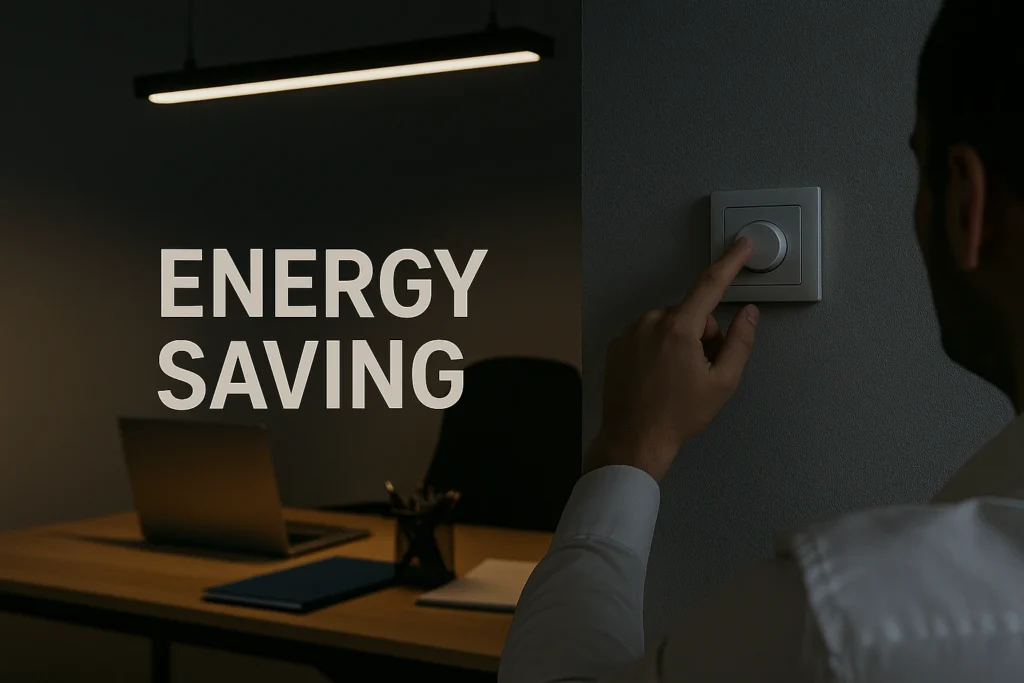
La facilidad de control es otra ventaja. Los protocolos de atenuación modernos permiten ajustes centralizados o automatizados, lo que permite a los administradores de instalaciones establecer horarios, crear escenas de iluminación e integrar sensores para ocupación o cosecha de luz natural. Esto no solo mejora la experiencia del usuario, sino que también garantiza que el sistema de iluminación funcione con una eficiencia óptima sin una intervención manual constante.
Desde una perspectiva a largo plazo, los costos de mantenimiento reducidos son igualmente importantes. Al evitar los LED de sobreconducción y minimizar el uso innecesario, la atenuación prolonga la vida útil de los accesorios y los controladores. Esto significa menos reemplazos, menos tiempo de inactividad y menores gastos operativos durante la vida útil del sistema.
Los protocolos de atenuación también contribuyen a la comodidad y la flexibilidad. Los ajustes de brillo suave ayudan a reducir el deslumbramiento y la tensión en los ojos, creando entornos más agradables para empleados, clientes o invitados. En espacios multiusos, la capacidad de cambiar entre diferentes escenas de iluminación mejora la funcionalidad y la atmósfera.
En última instancia, la elección del protocolo de atenuación no solo da forma a su sistema de iluminación hoy, sino también a la facilidad con la que puede adaptarse a las necesidades futuras. Entre las muchas opciones disponibles, DALI y PWM siguen siendo dos de las más adoptadas, cada una con fortalezas únicas que se adaptan a diferentes requisitos de proyecto. Comprender sus capacidades lo ayudará a tomar una decisión informada y lista para el futuro.
¿Qué es la atenuación PWM?
PWM (Modulación de ancho de pulso) La atenuación es uno de los métodos más comunes para controlar el brillo del LED, especialmente en proyectos de iluminación de escala pequeña a mediana o de pequeña a mediana. En lugar de bajar el voltaje real al LED, PWM enciende y apaga rápidamente el LED a una frecuencia específica. Al ajustar la proporción de tiempo de "encendido" al tiempo de "apagado", conocido como ciclo de trabajo, el brillo percibido cambia mientras el LED aún recibe voltaje completo durante cada pulso.
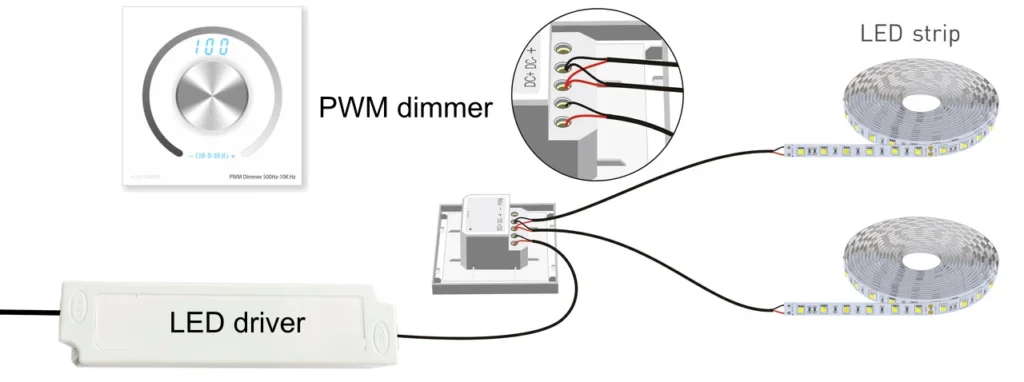
Desde la perspectiva del ojo humano, este cambio rápido es invisible cuando se realiza a una frecuencia lo suficientemente alta, y el LED simplemente parece más oscuro o más brillante. Este método garantiza que la temperatura de color del LED se mantenga estable en diferentes niveles de brillo, lo que es particularmente útil en pantallas de venta minorista, iluminación decorativa y configuraciones de hospitalidad donde el color consistente es importante.
Las ventajas de la atenuación PWM incluyen:
Relación coste-eficacia – Los controladores PWM son generalmente más simples y menos costosos, lo que los hace atractivos para proyectos con presupuestos ajustados.
Rendimiento de color estable – Los LED mantienen sus características de color en varios niveles de brillo.
Amplia compatibilidad – Muchas tiras y accesorios de LED en el mercado están diseñados teniendo en cuenta el control PWM.
Limitaciones a tener en cuenta:
Problemas potenciales de parpadeo – Si la frecuencia es demasiado baja, las personas sensibles pueden percibir parpadeos y las cámaras de alta velocidad pueden capturar efectos de estroboscópico.
Distancia de transmisión efectiva más corta – Las señales de control PWM pueden degradarse durante tramos de cable más largos, lo que las hace menos adecuadas para sistemas de construcción a gran escala sin acondicionamiento adicional de señal.
Escalabilidad limitada – Si bien es excelente para aplicaciones pequeñas o de una sola zona, PWM no es tan eficiente cuando se administra cientos de accesorios en múltiples áreas.
Las aplicaciones típicas de la atenuación PWM incluyen tiras de LED en estantes minoristas, iluminación de acento en hoteles, iluminación de señalización y configuraciones de iluminación inteligente residencial donde el costo y la simplicidad tienen prioridad sobre las funciones de control avanzadas.

¿Qué es la atenuación de Dalí?
dalí (Interfaz de iluminación direccionable digital) es un protocolo de comunicación digital estandarizado específicamente diseñado para el control de iluminación profesional. A diferencia de PWM, que modula la entrega de potencia para ajustar el brillo, DALI envía señales digitales a los controladores compatibles, diciéndoles exactamente qué nivel de brillo producir. Cada dispositivo o controlador en una red DALI puede tener su propia dirección única, permitiendo el control individual o agrupado sin cambios de cableado complejos.
Cómo funciona:
Una red DALI consta de un controlador (o controladores múltiples), controladores compatibles con DALI y un bus de dos hilos que transporta tanto la alimentación del circuito de control como los datos digitales. El protocolo admite hasta 64 dispositivos direccionables individualmente por línea DALI, que se puede organizar en hasta 16 grupos y asignar 16 escenas preestablecidas. Debido a que es digital, los ajustes de brillo son precisos, con hasta 254 niveles de atenuación discretos, y libres de parpadeo visible.
Las ventajas de la atenuación DALI incluyen:
Control preciso y sin parpadeo – Ideal para entornos donde la calidad de la iluminación es crítica, como oficinas, hospitales y museos.
Control de zonificación y escena flexible – Los accesorios se pueden reagrupar o reprogramar a través del software sin volver a cablear.
Comunicación bidireccional – Los dispositivos pueden informar su estado (encendido/apagado, nivel de atenuación, fallas) al sistema de control, lo que permite un mantenimiento proactivo.
Preparado para la integración – Se integra fácilmente con sistemas de gestión de edificios (BMS) como KNX o BACnet para un control centralizado.
Carreras de cable más largas – Adecuado para grandes edificios sin degradación significativa de la señal.
Limitaciones a tener en cuenta:
Costo inicial más alto – Requiere controladores y controladores compatibles con DALI, que suelen ser más caros que las configuraciones básicas de PWM.
Experiencia en instalación – La configuración y puesta en marcha requieren personal capacitado y software especializado.
Límite de dispositivo por línea – Aunque escalable, cada línea DALI tiene un máximo de 64 dispositivos, por lo que los proyectos más grandes pueden necesitar múltiples líneas o puertas de enlace.
Las aplicaciones típicas de la atenuación de Dali incluyen oficinas corporativas, aeropuertos, centros comerciales, hospitales, universidades y proyectos de hospitalidad de alto nivel; en cualquier lugar, la iluminación debe ser altamente controlable, escalable e integrada con sistemas de construcción más amplios.
Si bien tanto la atenuación DALI como la atenuación PWM pueden lograr una iluminación ajustable, funcionan de manera fundamentalmente diferentes y se adaptan a diferentes tipos de proyectos. La siguiente tabla resume las diferencias centrales:

DALI vs PWM: diferencias clave
| Característica | Regulación DALI | Regulación PWM |
| Método de control | Protocolo digital que envía comandos de brillo precisos | Conmutación rápida de encendido/apagado para variar el brillo percibido |
| precisión | Hasta 254 niveles de atenuación discretos, suaves y sin parpadeo | Limitado por la frecuencia; la suavidad depende de la calidad del conductor |
| Parpadeo | Sin parpadeo visible | Posible a bajas frecuencias o con mal diseño del conductor |
| escalabilidad | Admite 64 dispositivos por línea, fácilmente conectados a la red para grandes proyectos | Lo mejor para sistemas de zona pequeña o única |
| Comunicación | Bidireccional (Informe de estado, Detección de fallas) | Unidireccional (sin comentarios de los accesorios) |
| Integración | Funciona con BMS como KNX, BACnet | Controladores inteligentes independientes o simples |
| Costo de instalación | Más alto (drivers especializados, software de configuración) | Inferior (controladores y controladores básicos) |
| Casos prácticos | Grandes edificios comerciales, oficinas, hospitales, cadenas minoristas | Tiras LED, iluminación de acento, iluminación inteligente a pequeña escala |
Entendiendo el impacto de estas diferencias
Tamaño y complejidad del sistema – Para oficinas de varios pisos o espacios comerciales con cientos de accesorios, DALI ofrece la estructura y escalabilidad necesarias para una gestión eficiente. PWM, aunque más simple, se vuelve difícil de mantener en tales escenarios.
Calidad de iluminación – Donde el brillo y la estabilidad del color constantes son cruciales, como las galerías o el cuidado de la salud, el control preciso de DALI supera a PWM.
Presupuesto y ROI – Si bien PWM tiene costos iniciales más bajos, DALI puede generar mayores ahorros a largo plazo al reducir el desperdicio de energía, prolongar la vida útil del accesorio y simplificar el mantenimiento a través de la monitorización de fallas en tiempo real.
Elegir entre estos protocolos no es solo una decisión técnica, sino de alinear su sistema de control de iluminación con el tamaño, los objetivos y los requisitos futuros de su proyecto.
Cuándo elegir la atenuación PWM
La atenuación de PWM es la más adecuada para proyectos donde la simplicidad, la asequibilidad y el rápido despliegue son las principales prioridades. Si bien carece del control y escalabilidad avanzados de DALI, puede ofrecer excelentes resultados en el contexto adecuado.
Puede elegir atenuación PWM si:
- El presupuesto es una restricción clave
Controladores compatibles con PWM Y los controladores son generalmente menos costosos, lo que los hace ideales para proyectos sensibles a los costos.
Esto puede ser especialmente beneficioso para la iluminación decorativa o secundaria donde el control avanzado es innecesario.
- La instalación es de pequeña escala o de una sola zona
PWM funciona bien para trabas de cables cortas y proyectos que no requieren zonificación compleja.
Los ejemplos incluyen exhibiciones de tiendas de boutique, iluminación decorativa de lobby de hotel o mejoras de iluminación inteligente residencial.
- La consistencia del color es importante, pero el control fino no
PWM mantiene la temperatura del color del LED en los niveles de brillo, lo cual es valioso para crear consistencia visual en pantallas o entornos temáticos.
- La velocidad de la instalación importa
La configuración es sencilla y no requiere herramientas de puesta en marcha avanzadas ni formación especializada.
Los escenarios típicos para la atenuación de PWM incluyen:
Iluminación de estantería y vitrinas de venta
Iluminación de acento de hospitalidad (barras, áreas de recepción, pasillos)
Señalización y características arquitectónicas decora
Instalaciones de tiras LED residenciales en cocinas, salones o jardines
Si bien PWM puede ser el ajuste perfecto para estas aplicaciones, es importante tener en cuenta sus limitaciones en los entornos comerciales a gran escala. En entornos con extensas redes de iluminación o donde se requiere un monitoreo centralizado, PWM puede alcanzar rápidamente sus límites prácticos.
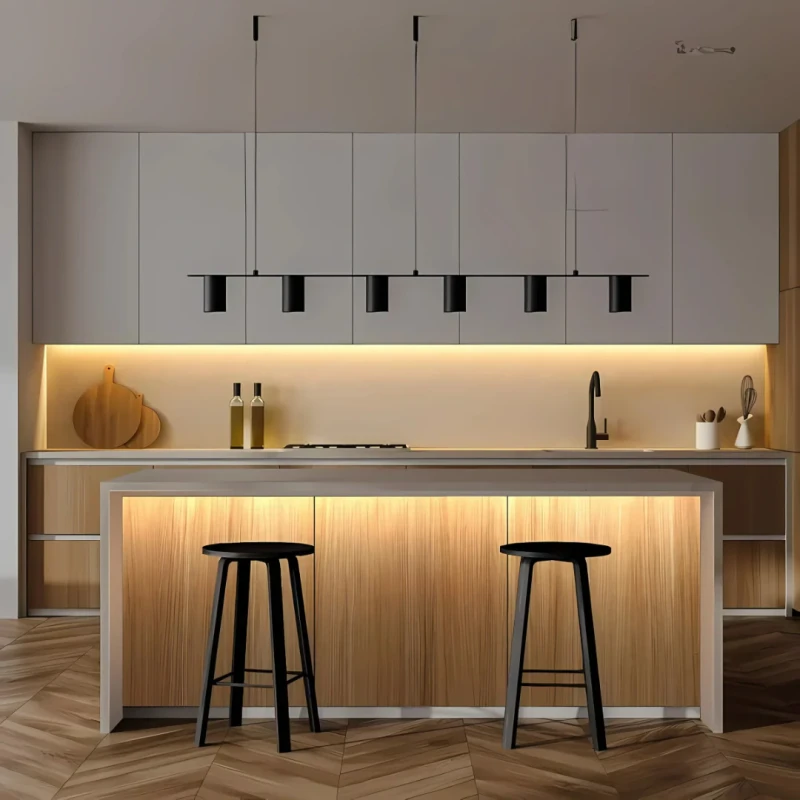

Controlador PWM de Meanwell
Cuándo elegir la atenuación de Dalí
DALI Dimming está diseñado para proyectos donde la precisión, la escalabilidad y la gestión a largo plazo son prioridades principales. Si bien requiere una mayor inversión inicial, sus capacidades avanzadas a menudo ofrecen un rendimiento más fuerte durante la vida útil del sistema.
Puede elegir atenuación de Dali si:
- Su proyecto es a gran escala o multizona
DALI admite hasta 64 dispositivos direccionables individualmente por línea, con agrupación y control de escenas flexibles.
Ideal para edificios de oficinas, hoteles, aeropuertos, hospitales y universidades donde cientos o incluso miles de accesorios necesitan un control coordinado.
- Necesitas un control de iluminación preciso y sin parpadeo
DALI ofrece hasta 254 niveles de atenuación con transiciones suaves, lo que lo hace perfecto para aplicaciones donde la calidad de iluminación afecta la productividad, el confort o la presentación de la marca.
- Se requiere integración con otros sistemas de construcción
DALI se conecta fácilmente con los sistemas de gestión de edificios (BMS) como KNX o BACnet, lo que permite un monitoreo centralizado, automatización y optimización de energía.
- La eficiencia del mantenimiento es una prioridad
La comunicación bidireccional permite que cada luminario informe su estado, por lo que los administradores de instalaciones pueden detectar fallas antes de tiempo y reducir el tiempo de inactividad.
Este enfoque proactivo ayuda a prolongar la vida útil de los equipos de iluminación y minimiza las llamadas de servicio no planificadas.
- La expansión futura y la flexibilidad de control son importantes
DALI admite la integración con sensores (ocupación, luz natural), paneles de control montados en la pared e interfaces táctiles.
Esto facilita la actualización del sistema más adelante con ajustes de iluminación automatizados, presets de escena y anulación manual fácil de usar sin reemplazar toda la infraestructura.
Los escenarios típicos para la atenuación de DALI incluyen:
Torres de oficinas corporativas con múltiples departamentos y espacios de reunión
Hospitales y clínicas donde la iluminación constante reduce la tensión ocular para el personal y mejora la comodidad del paciente
Centros comerciales con zonas de iluminación complejas y horarios
Centros de transporte como aeropuertos y estaciones de tren que requieren un control centralizado y confiable
Museos y galerías donde los niveles de luz precisos protegen exhibiciones sensibles
Cuando la iluminación juega un papel fundamental tanto en las operaciones diarias como en la estrategia energética a largo plazo, DALI proporciona el nivel de control y adaptabilidad que los métodos analógicos simples no pueden igualar.

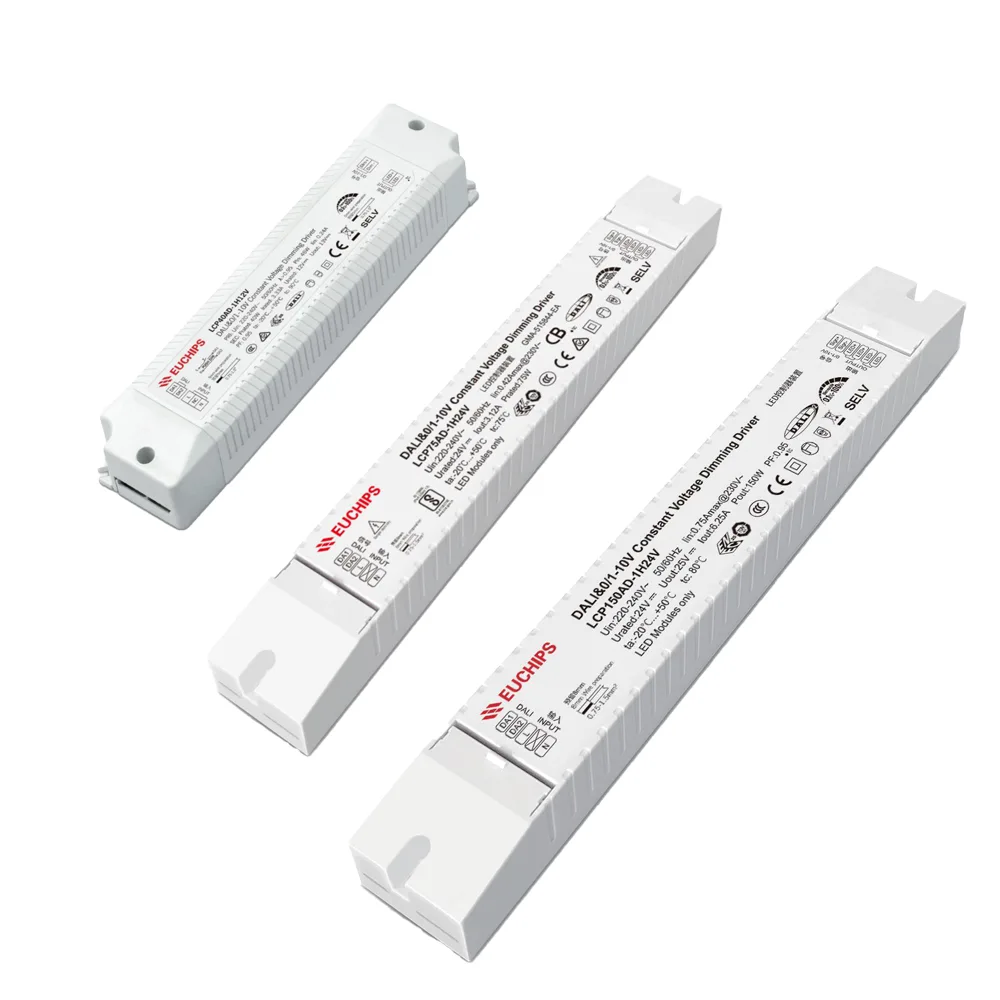
Conductor EUCHIPS Dalí
Consideraciones prácticas antes de decidir
Elegir entre DALI y PWM Dimming se reduce a la alineación del método de control con el tamaño, las metas y el presupuesto de su proyecto. Si está administrando una instalación a pequeña escala con zonas limitadas y un presupuesto ajustado, PWM ofrece una solución simple, confiable y rentable. Para proyectos grandes y complejos donde la flexibilidad, la escalabilidad y la integración son prioridades, DALI ofrece valor a largo plazo a pesar de la mayor inversión inicial.
Los factores clave a evaluar incluyen:
hacer un presupuesto – Considere no solo el costo inicial del equipo, sino también el ahorro de energía y la eficiencia de mantenimiento a largo plazo. La atenuación de PWM suele ser más rentable inicialmente, mientras que DALI ofrece un mejor valor a largo plazo en proyectos complejos y de alto nivel.
Escala de proyecto – Para proyectos pequeños y medianos con zonas limitadas, PWM puede ser una opción más simple y económica. Los proyectos a gran escala con múltiples zonas y necesidades de control avanzado pueden beneficiarse de la flexibilidad de DALI.
Integración del sistema – Si la iluminación necesita integrarse con un sistema de gestión de edificios (BMS), sensores de ocupación o sensores de luz natural, DALI proporciona compatibilidad estandarizada, mientras que PWM requiere cableado o controladores más personalizados.
futura expansión – Para proyectos que probablemente se expanden con zonas adicionales, control de escena o nuevos dispositivos de control (por ejemplo, paneles de pared, interfaces táctiles), el diseño direccionable de DALI ofrece una mayor escalabilidad. PWM también se puede ampliar, pero generalmente con más cableado y actualizaciones de controlador.
¿Qué protocolo se ajusta a su iluminación inteligente?
Elegir entre PWM y DALI en última instancia depende de las prioridades de su proyecto. Si su enfoque es la eficiencia de costos y la configuración directa, PWM puede ser la opción práctica. Para proyectos que exigen una atenuación precisa, un control centralizado e integración con los sistemas de gestión de edificios, DALI a menudo vale la pena la inversión. Considere su presupuesto, escala de proyecto, necesidades de integración y planes de expansión futuros antes de decidir.
En SignliteLED, ofrecemos soluciones de iluminación LED PWM y DALI, respaldadas por años de experiencia en el diseño, personalización y suministro de accesorios para proyectos comerciales en todo el mundo. Ya sea que esté actualizando un sistema de iluminación existente o construyendo desde cero, nuestro equipo puede ayudarlo a seleccionar el protocolo adecuado, proporcionar diseños de productos personalizados y garantizar una instalación sin problemas.
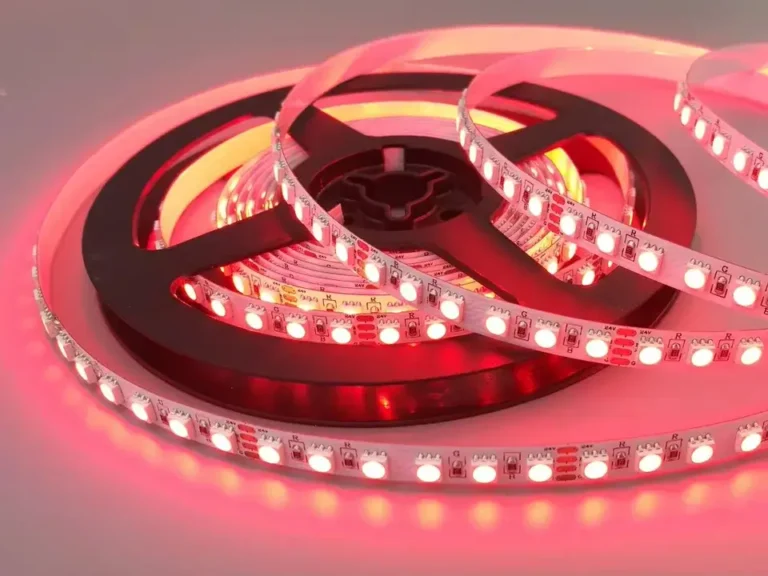
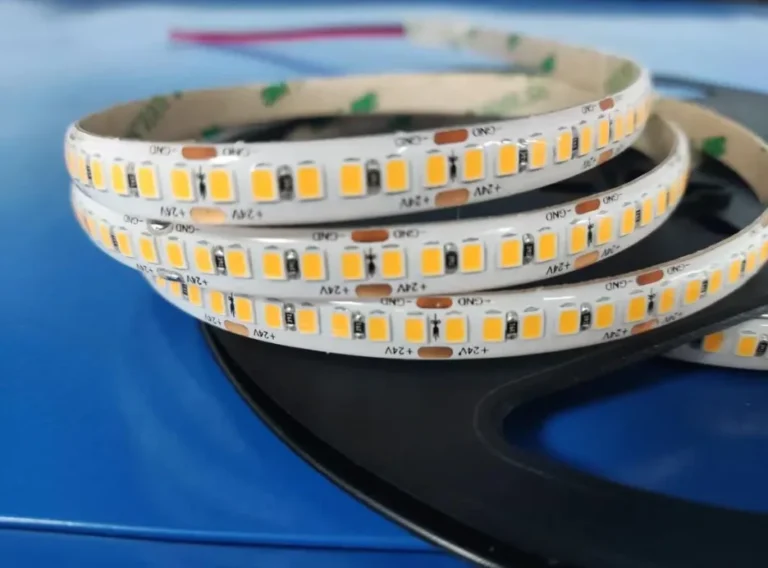
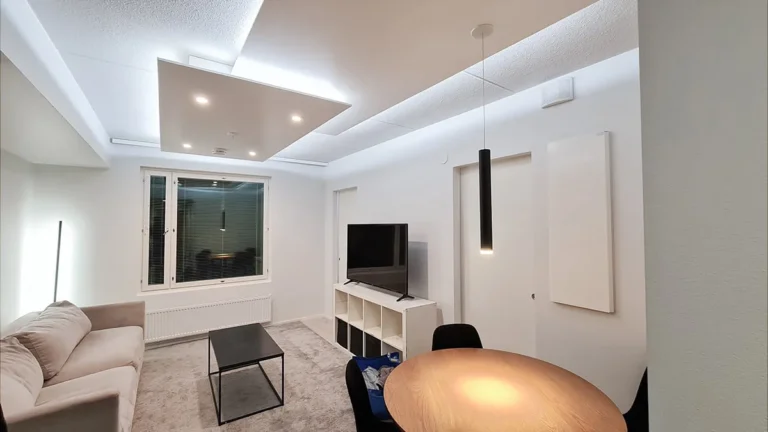
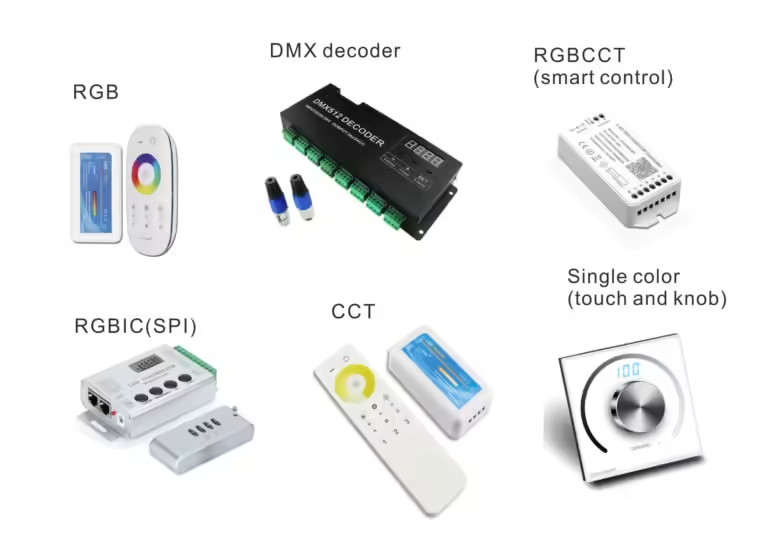
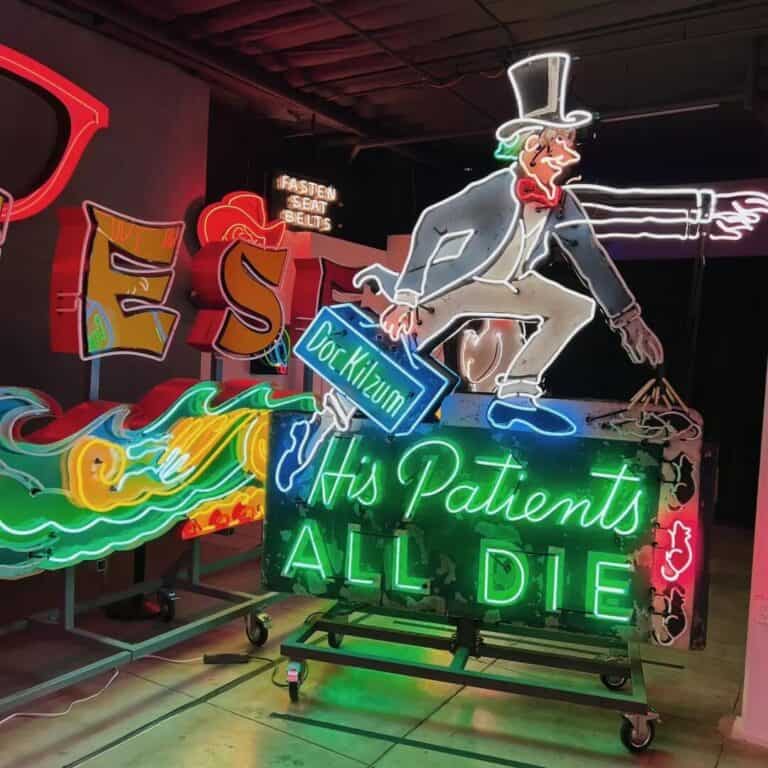
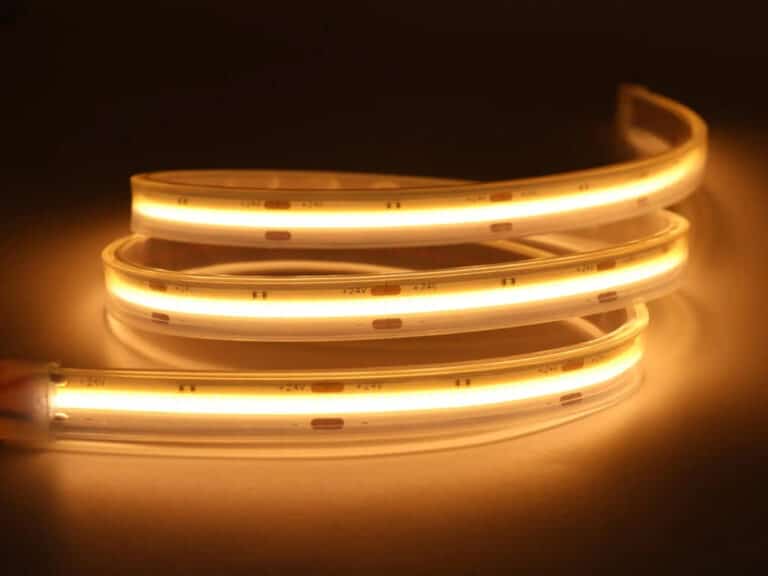

Simplemente no podía dejar su sitio web antes de sugerir que realmente me encantó la información habitual que un suministro individual en sus visitantes volverá regularmente para verificar las nuevas publicaciones.